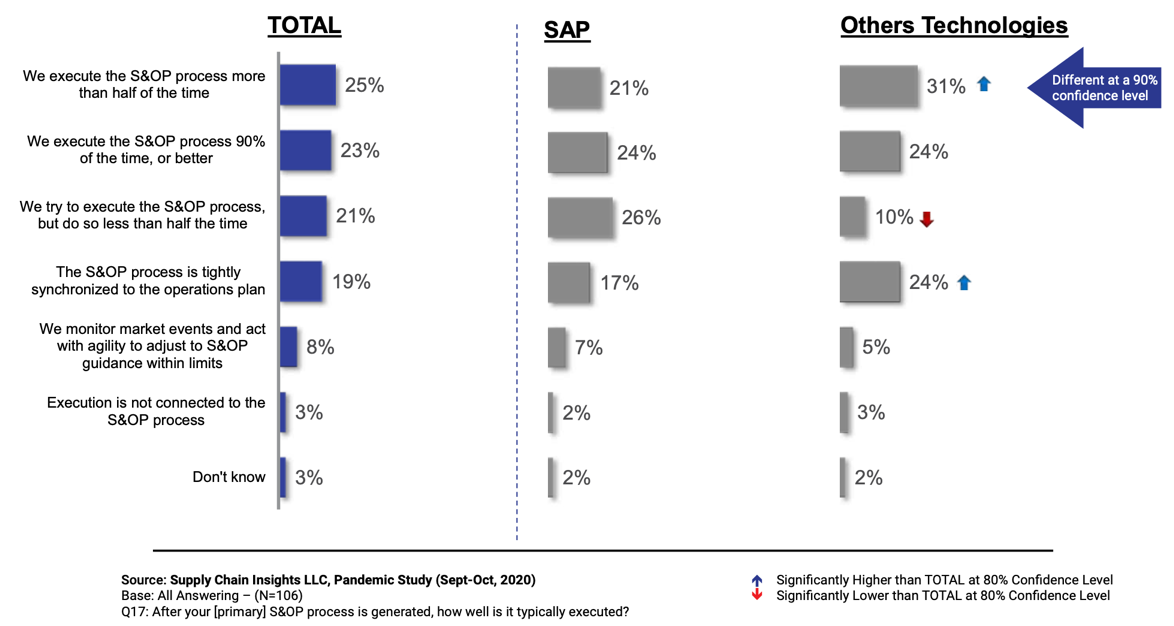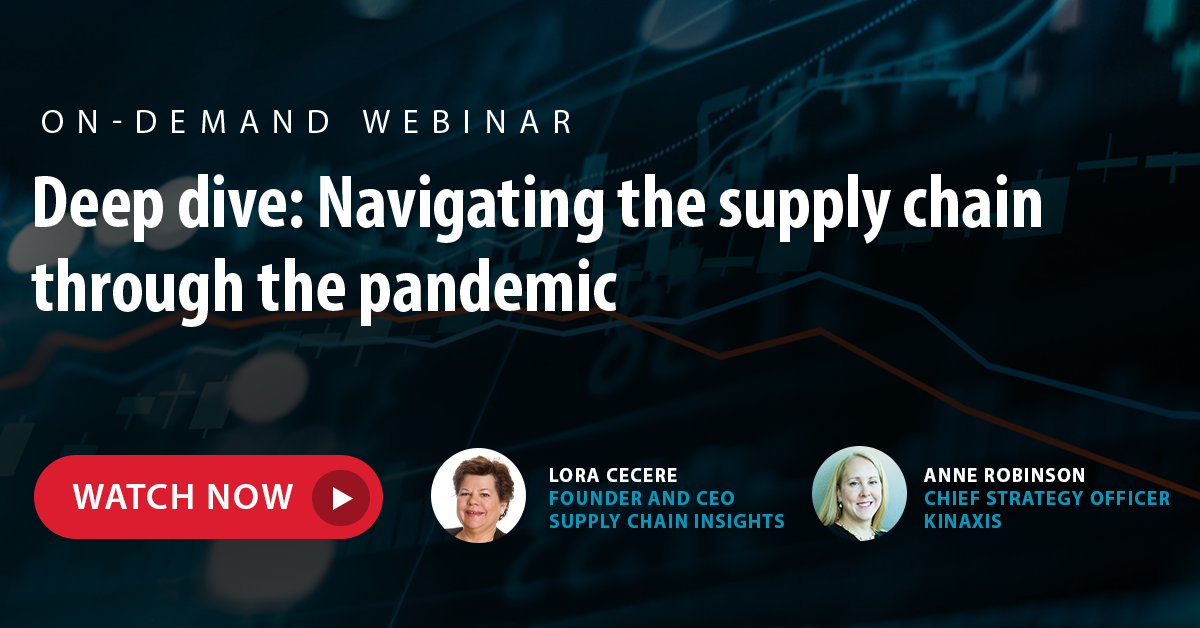Sales and operations planning (S&OP) can be painful. It is additive work on top of the day-to-day activities that use most, if not all, of the available human capacity. It causes anxiety because, in addition to the sunk costs of time and energy, the potential impact of any errors and revisions grows as the review process ascends the hierarchy.
By the time of the executive meeting — if the meeting is even held and all of the stakeholders attend — everyone involved is eager for the cycle to end. Although, with the conclusion of one cycle, comes the beginning of the next one.
One major driver of why this painful scene repeats every month is because “legacy enterprise resource planning (ERP) systems, disparate supply chain modules and Excel spreadsheets just aren’t cutting it anymore.”
S&OP execution is limited by ineffective tools
New research from Supply Chain Insights finds that 60% of respondents to an October 2020 survey said that they were satisfied with their planning solution. More specifically, 29% of respondents were very satisfied and another 31% were somewhat satisfied.
However, the research found that “companies tightly tethered to integrated solutions struggled to adapt. For example, companies using SAP ERP plus a planning tool like SAP APO or SAP IBP rated themselves significantly less agile.” As shown in the figure below, supply chain organizations using best of breed solutions fared better in the pandemic. Tight integration to ERP did not allow the flexibility in modeling that was required by teams in designing the COVID-19 response.
Comparison of Use of Best of Breed Technology Usage to SAP Standardized Architectures During the Pandemic

Notably, the respondents using software from ERP providers like SAP during the COVID-19 pandemic were less likely than those using other technologies to tightly align the S&OP process with the operations plan and also less likely to execute the S&OP process half of the time or better. Lastly, they were also more likely to fail to execute the S&OP at least half of the time.
Putting people in charge of planning
Supply chain planning is hard enough without having to deal with outdated interfaces that mean planners spend more time clicking than actually accomplishing anything. The complexity and uncertainty that comes with constant disruption has compounded the problem, further exposing antiquated planning tools and techniques.
The disconnected, cascaded processes generate second-rate results that keep supply chains from delivering on their promises. Ultimately, that has led some to shift to more manual collaboration efforts, as one supply chain leader told Supply Chain Insights, “We all laid-down our cards and worked together to fulfill orders. Our functional barriers disappeared as we became more human, trying to make the best out of a difficult situation.”
By themselves, increased collaboration and alignment are great things for supply chain. However, in order for them to be scalable and impactful, people must be given the opportunity to focus on what matters most to their business. This means finding ways to reduce the volume of repetitive, low value-add, day-to-day activities that often come with clunky tools and processes.
Within S&OP, and throughout planning, in general, people must be the ones in charge of the process and technology, not the other way around. This shifts the conversation from debates about data sources to collaborative decision making. It starts by:
- Connecting to everywhere by bringing together all internal and external supply chain data sources and connected algorithms — even with multiple enterprise resources planning (ERP) instances and multiple heterogeneous ERP platforms .
- Transforming data into dashboards, scorecards, network visualizations, geo maps and more.
- Aligning end-to-end functions with concurrent planning to remove silos, maximize resources and rapidly understand the outcome of plans.
- Planning, monitoring and responding instantly to changes with what-next scenarios that help manage volatility without misalignment.
Leading supply chains have already empowered everyone to apply judgment, democratize insights and streamline end-to-end functional collaboration. By putting people in charge of planning, supply chains can leverage scalable, real-world solutions to lead not with spreadsheets and slides, and certainly not empty promises, but with proof and tangible results.
You can explore more insights from the survey in the full report from Supply Chain Insights, Navigating the supply chain through the pandemic, or watch our on-demand webinar with Lora Cecere, founder and CEO of Supply Chain Insights, for a deep dive into the research on supply chains' disruption preparedness, including lessons for the future.
Additional Resources
- S&OP frequently asked questions






